Neutron capture sensitivities
in the $r$ process
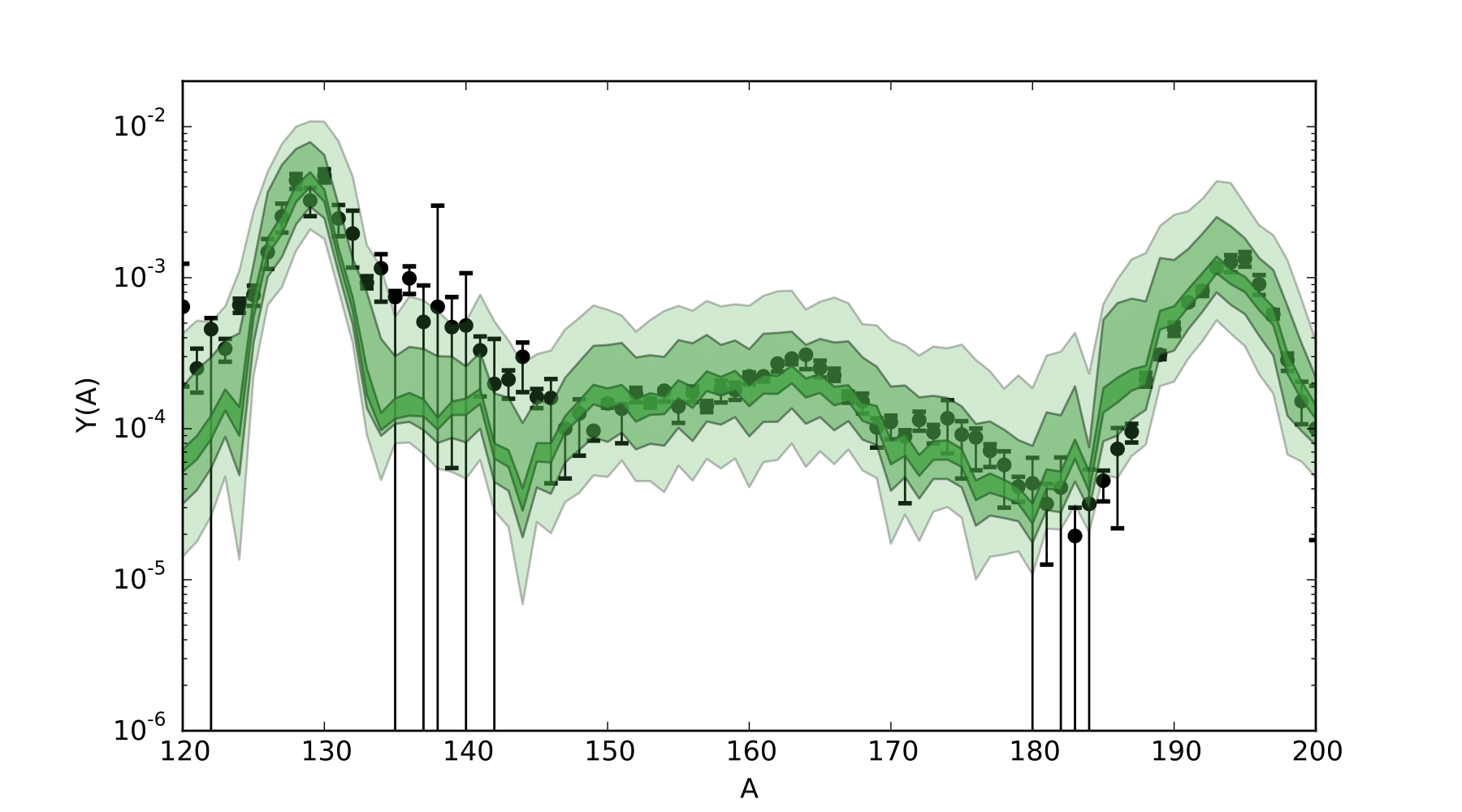

LA-UR-22-30907
Matthew Mumpower
Opportunities with Neutron Induced Reaction Measurements
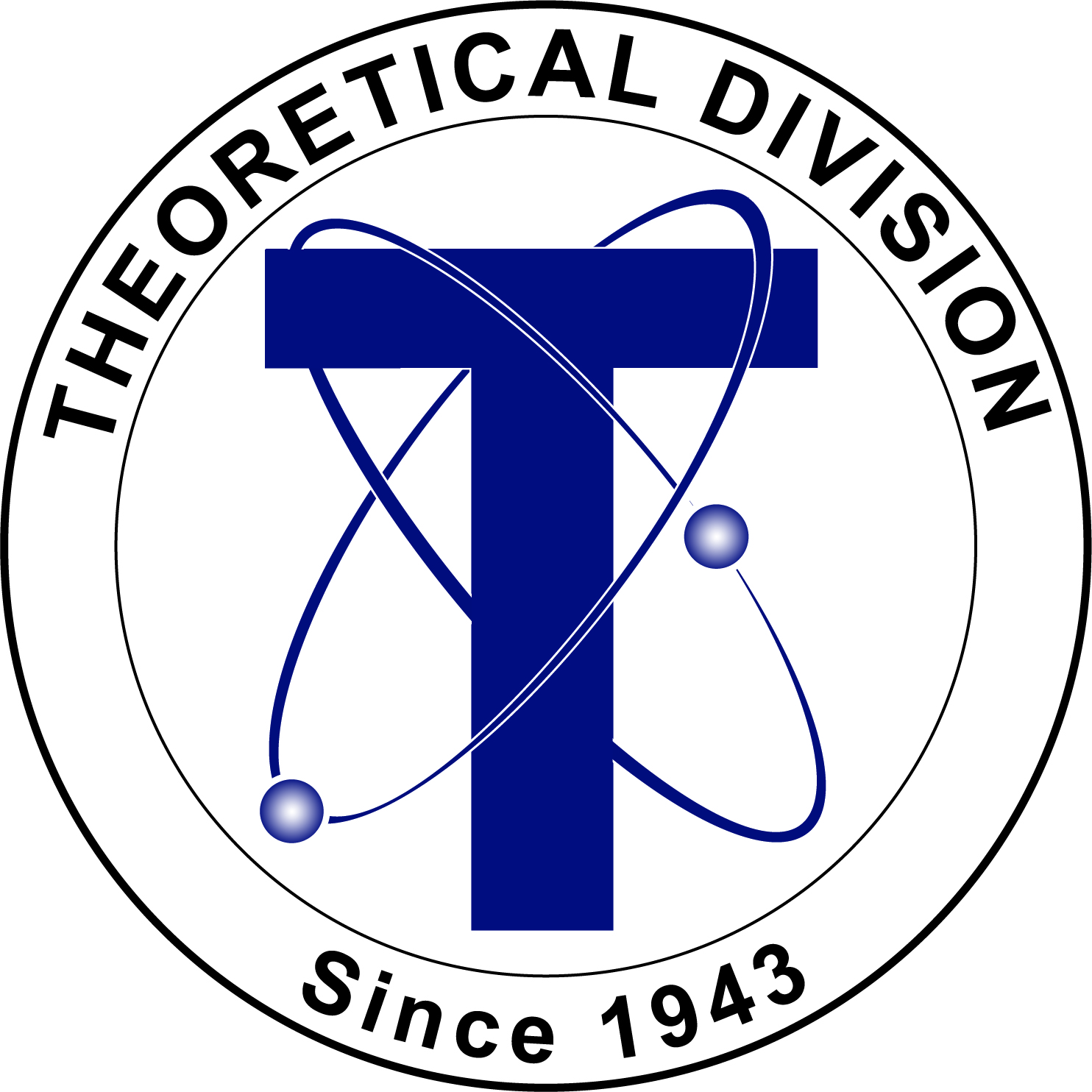
10/17/2022

Los Alamos National Laboratory Caveat
The submitted materials have been authored by an employee or employees of Triad National Security, LLC (Triad) under contract with the U.S. Department of Energy/National Nuclear Security Administration (DOE/NNSA).
Accordingly, the U.S. Government retains an irrevocable, nonexclusive, royaltyfree license to publish, translate, reproduce, use, or dispose of the published form of the work and to authorize others to do the same for U.S. Government purposes.
The rapid neutron capture process

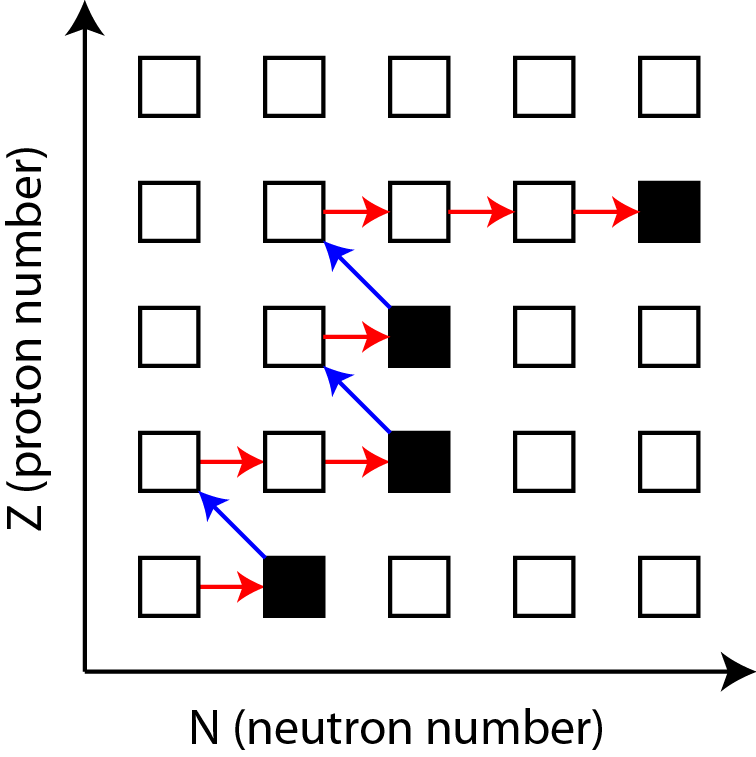
Rapid neutron capture that occurs in astrophysical environments allowing for the production of heavy elements
Neutron captures are initially much faster than $\beta$-decays
Relative slowdown in the nuclear flow (right) produces peak structures in the observed abundances (left)
Astrophysical environment must produce a lot of free neutrons in order for this process to proceed
The importance of Neutron capture
Neutron capture tells us the rate at which we move to nuclei with more $N/Z$
By detailed balance, they also impact photodissociation rates when $T_9\gtrsim1$
Density plays an important role in calculating the rate
When (n,$\gamma$) $\Leftrightarrow$ ($\gamma$,n) equilibrium breaks, individual capture rates matter!
Interplay between (n,$\gamma$), (n,2n) and (n,f) is critical for understanding nuclear flow at the extremes
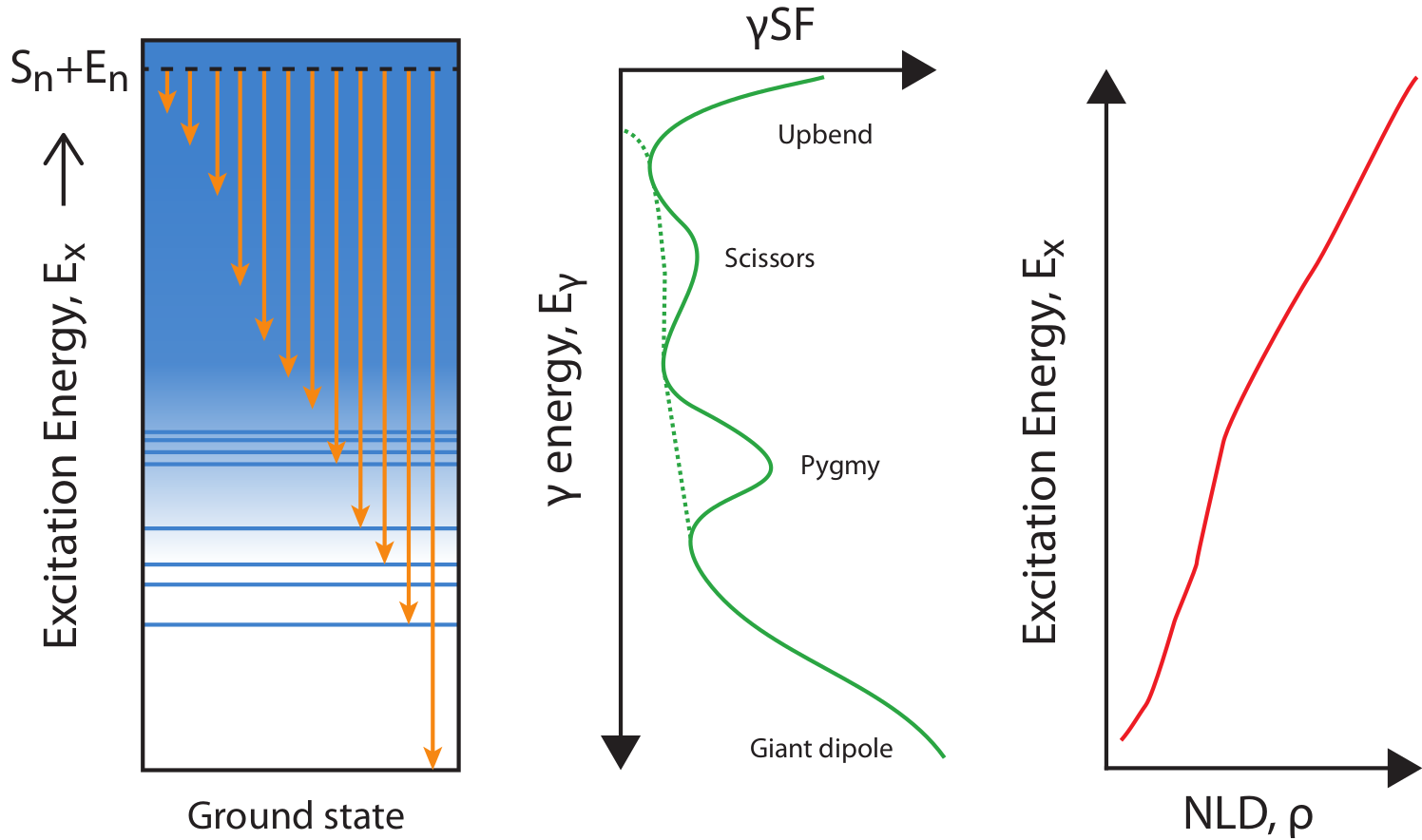
Neutron capture has the least information
of all nuclear data entering into simulations!
Neutron capture rates
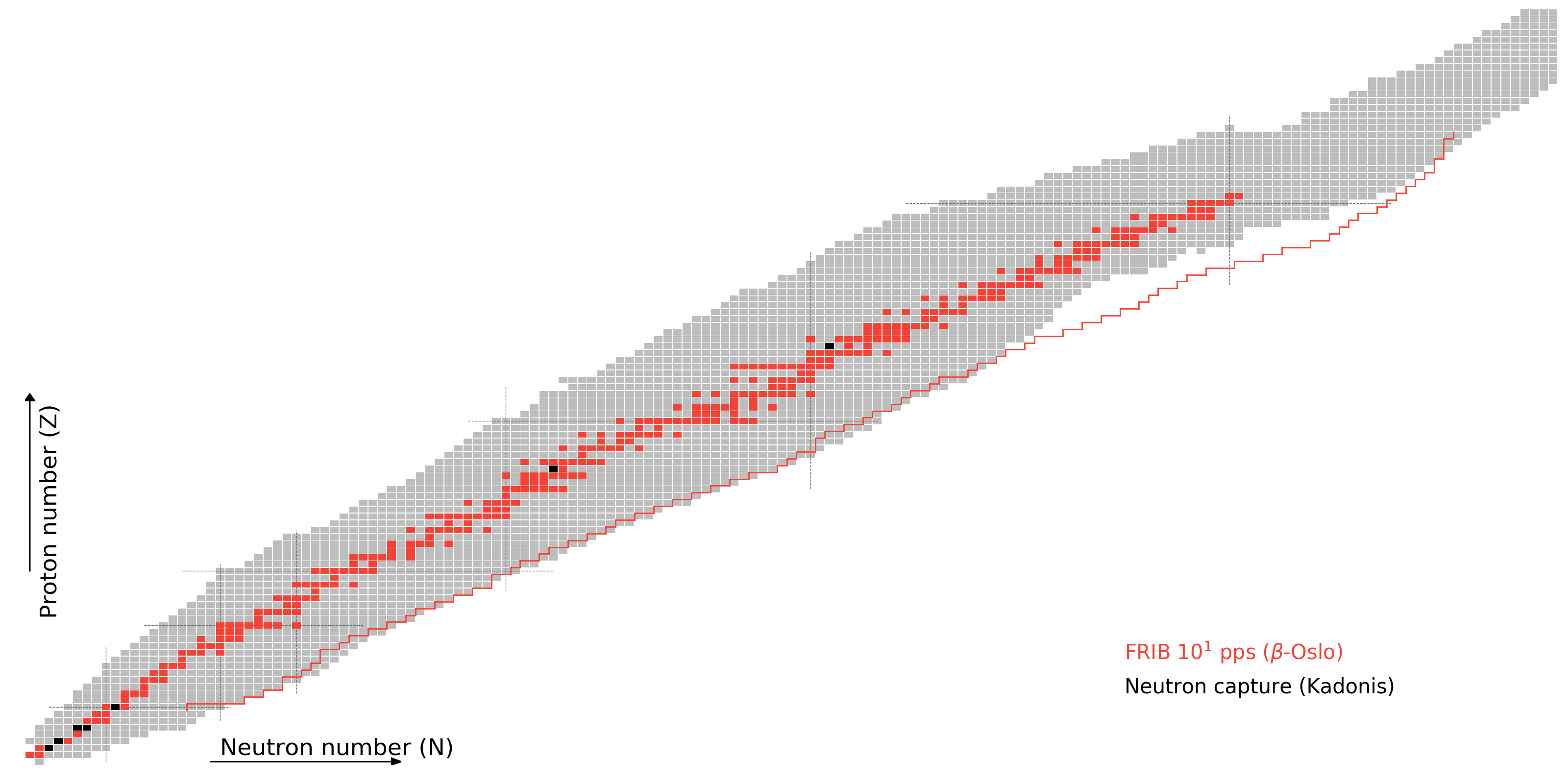
Current uncertainties from neutron capture
It is difficult to predict abundances at a factor of 100 or 10 uncertainty (currently)
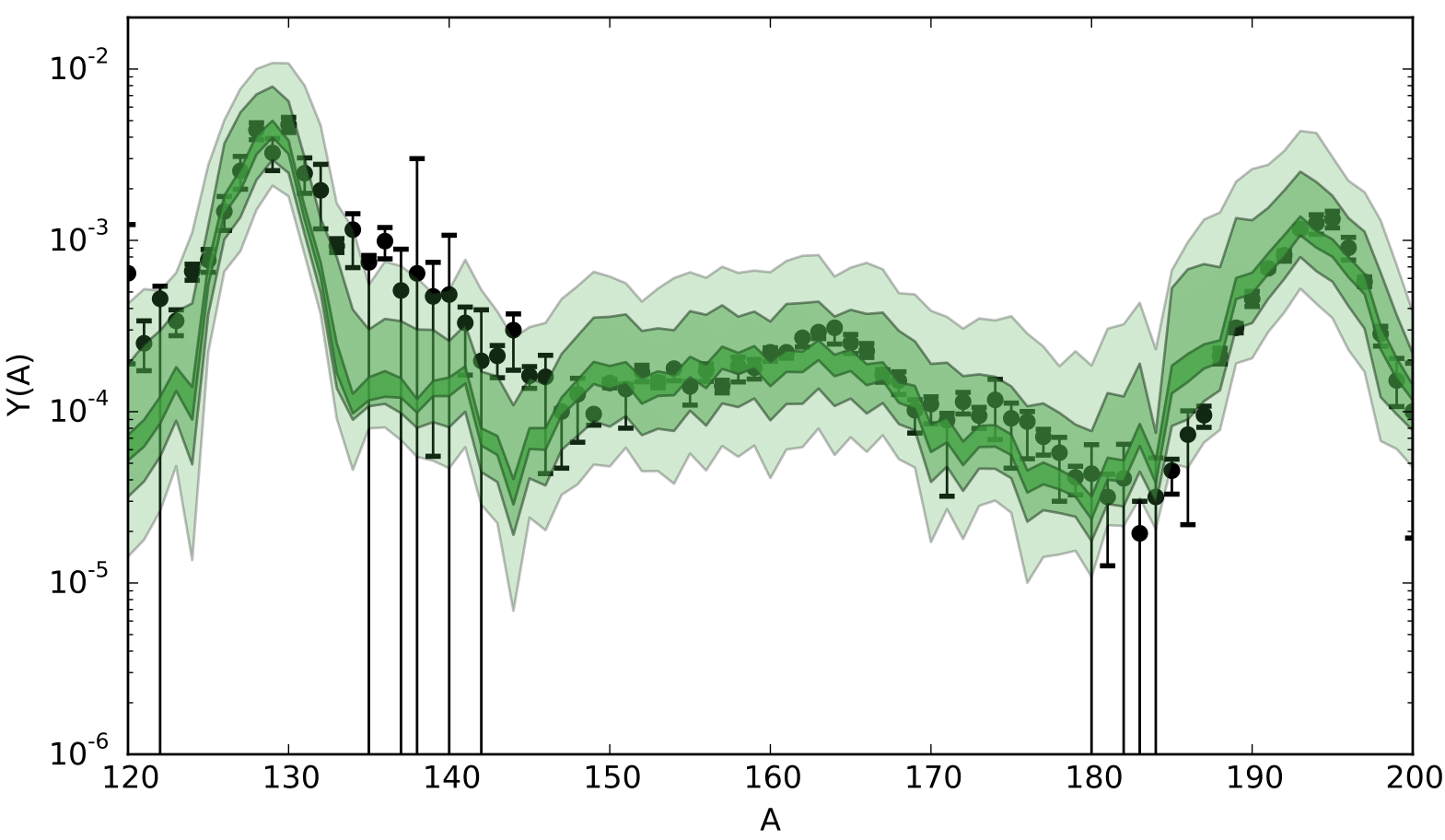
Factor uncertainty: 100 10 2
Monte Carlo variation of neutron capture rates
We can resolve abundance features once uncertainties are reduced
What nuclei do we focus on?
This isn't an easy question...
It depends on what you want to learn!
You may want to learn something about nuclear structure or underlying reaction mechanisms
Or about the formation of heavy elements
Ideally we gain information about each of these topics in a single measurement
Global Sensitvity Studies
Hot wind (low entropy)
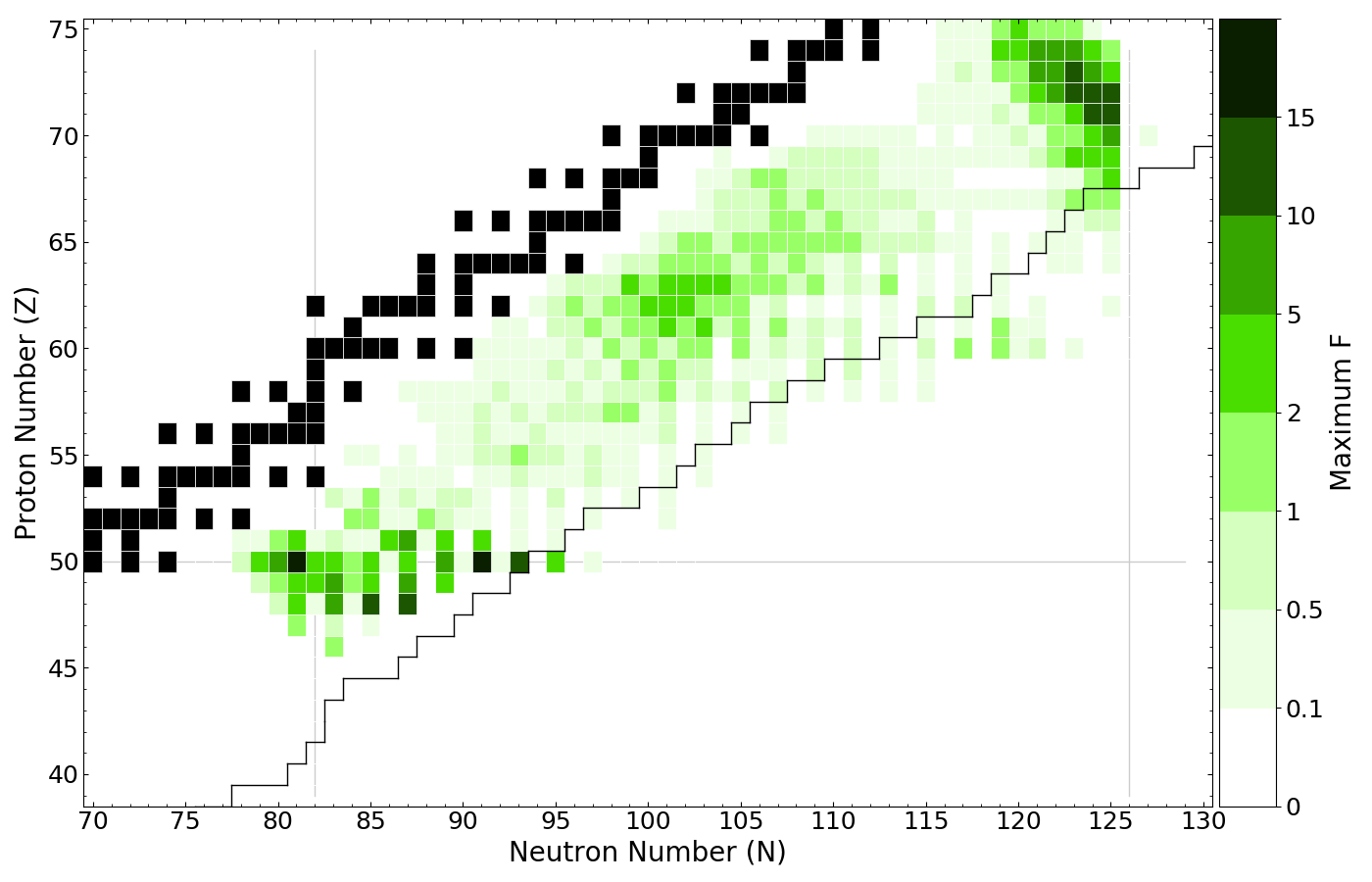
Nuclei with a large nuclear flow typically impart a global change
Global Sensitvity Studies
Hot wind (high entropy)
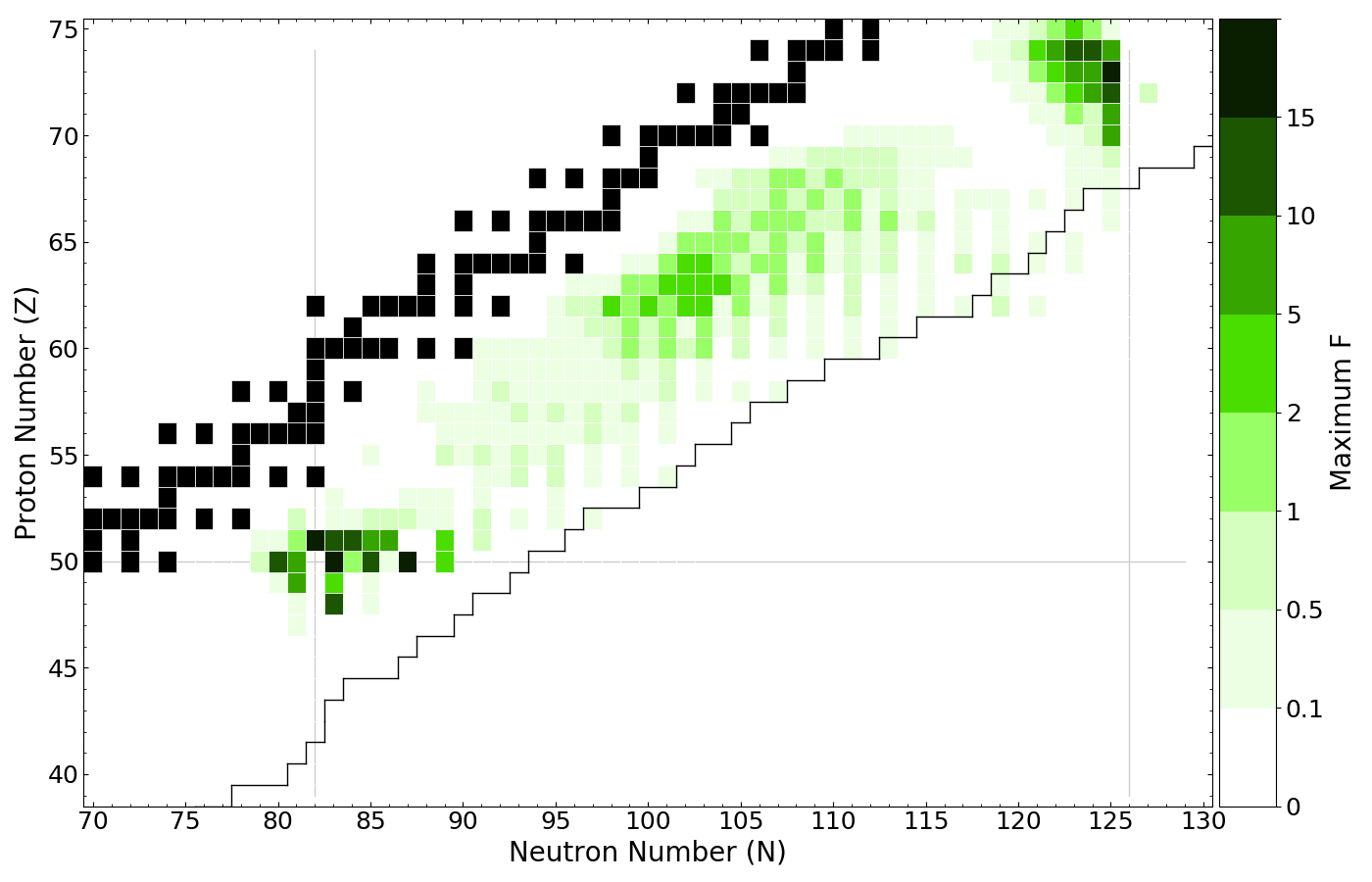
These tend to cluster around the major closed shell
Global Sensitvity Studies
Cold wind
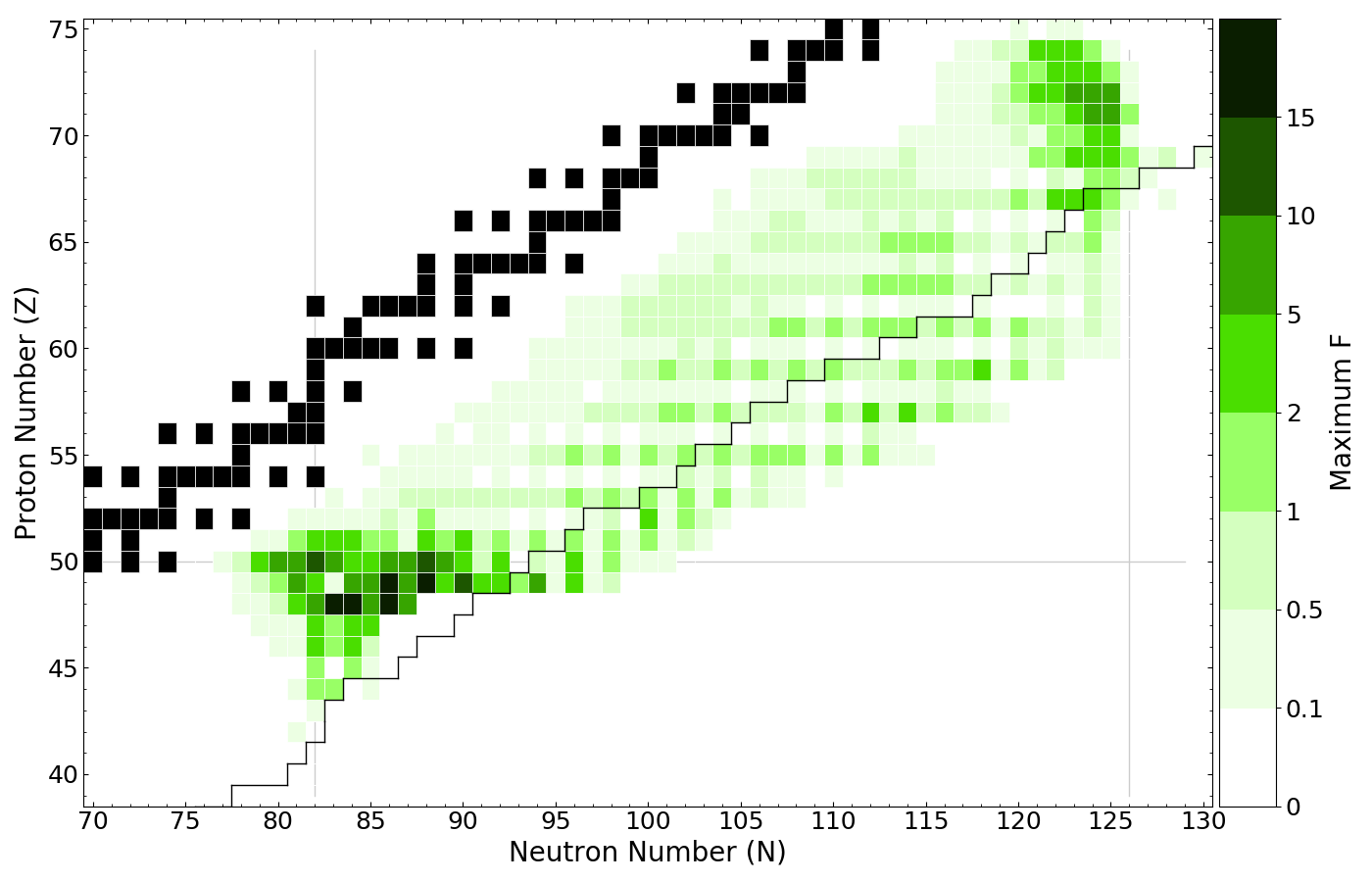
Regional changes are important for understanding isotopic ratios
Global Sensitvity Studies
Dynamical ejecta from a neutron star merger

It is important to consider the variation in $r$-process conditions
M1 enhancement of capture rates
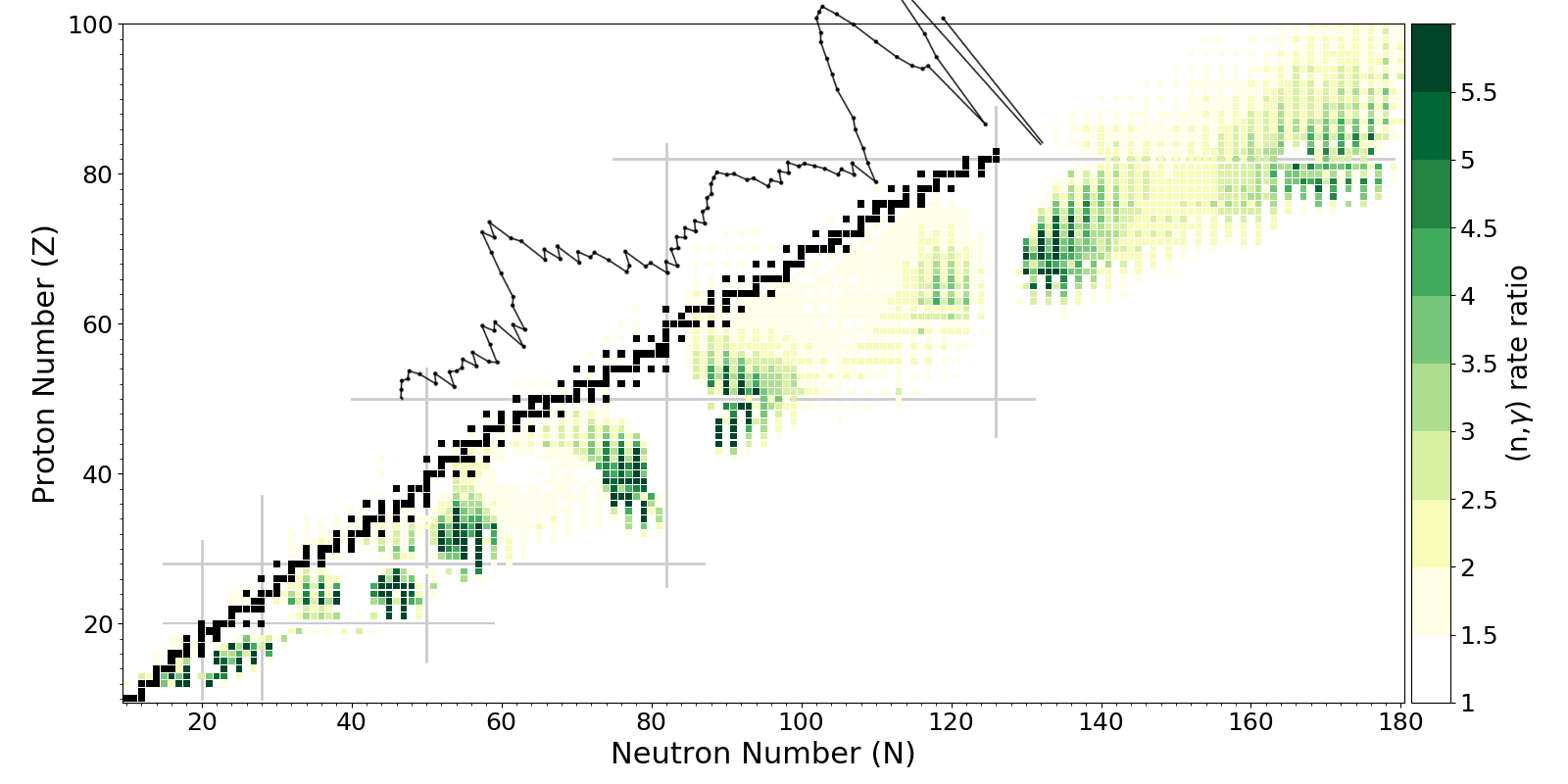
The impact (darker color) to neutron-rich nuclei is even larger than for those near stability
An intriguing result... follows the solar isotopic pattern
Many candidates (Ce, La, Pr) and lighter elements may be within reach of future reaction studies
Future neutron facilities
Researchers should seek to balance the opportunity cost between:
Measurements which can teach us about structure / reaction mechanisms
Measurements which provide insight into the operation of nucleosynthesis processes
Measurements that can suss out important trends that may be extrapolated
Such a facility would be invaluable for:
Scientific applications (e.g. $s$, $i$, $r$ processes in astrophysics)
Nuclear energy
National security
It is important to remember that nuclear data is correlated; see e.g. Kiss et al. ApJ 936 107 (2022)
New information on neutron-induced reactions will also impact insights into other nuclear properties
(potentially in unpredictable ways)